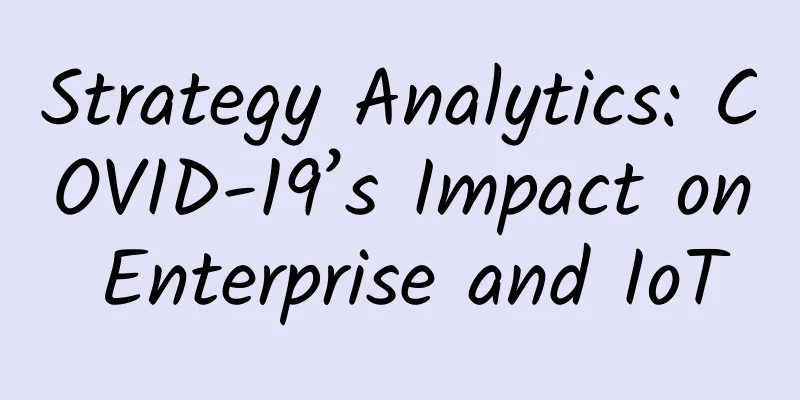Event planning and operation skills!

|
Today I want to talk to you about how to plan an event efficiently. What are the operational “routines” behind it? A successful event planning must be based on the following three elements. 1. Business objectivesSome people say that operations should be user-centric. This is incorrect. Operations should be business-centric, and the goal is to maximize business value. User-driven is a means to maximize business value. Therefore, no matter what activities are done, the business goals must be clarified first. How to define the activity objectives? Activity goal = (number) of (target users) who generate (target behavior) within (activity time) For example: (KOL user) (browsed paid content) (1 million times) during the period (June 1st - June 30th), generating business value (1.5 million yuan). When setting campaign goals, it is also important to consider budget and calculate ROI or similar metrics. ROI=(Benefit-Cost)/Cost. For example, in the above example, if the cost is 500,000 yuan, then ROI=(150-50)/50=2. Often times, activity goals cannot directly generate quantifiable benefits. In this case, it is not necessary to calculate ROI. Instead, you can calculate the cost of a single user behavior. For example, if there is no direct business value of RMB 1.5 million, then the cost of a single user browse can be quantified as RMB 500,000/1 million times = RMB 0.5. 2. User MotivationAs mentioned earlier, user-driven is a means to maximize business value. When planning an event, we should fully consider what motivations users have to complete our target behaviors. Regarding user motivation, we have to mention the eight driving forces of gamification operations. The details of this have been introduced in detail in the article "How to implement gamification operations to effectively help achieve operational goals." Based on these eight drivers, we have summarized eight types of activities for reference when planning activities. 1) LotteryThe driving forces behind interest incentives include possession, unknown and curiosity (generally, the driving forces behind each product and each activity may combine the eight major drivers, but the importance varies. Only a few main drivers are mentioned here. The classification of each subsequent activity is the same and will not be explained again). Advantages: The most common, simple and effective. Generally, the effect of the activity will not be too bad (but not too good either). Generally, this method can be used to activate users in the early stages of a product. Be careful to avoid pitfalls: high cost, people will participate only if there are prizes; it has been abused, and has damaged word of mouth, so many people don’t win in the draws, or if they do win, they only win coupons or a few cents that have no users, resulting in many users not being active in participating in draw-type activities. Tips: You can try it in the early stages of the product. The prizes should be practical, not too few, and not abused. 2) FissionPowerful social drive, fission is divided into different design forms, and the following design forms are sorted out: Advantages: It is easy to create a hit product through social relationships. Be careful to avoid pitfalls: the fission path must be unobstructed, avoid disturbing users due to excessive sharing (users must be accurate), and pay attention to WeChat bans. Tips: "High risk, high return", when planning fission activities, you need to consider the following issues:
Regarding being banned, WeChat has strict control and it is recommended to split within the APP or mini program. 3) Check-inFear of losing is most commonly used in the points system. Advantages: Cultivate user usage habits and form product stickiness. Be careful to avoid pitfalls: insufficient timely feedback can easily lead to user loss Tips: You can combine immediate rewards and ultimate rewards, balance user churn and habit formation, and cooperate with user reminder design. For example, users can punch in and get a small reward each time. If they persist to the end, they can get a big prize. When users forget to punch in, they can be reminded. This type of design can usually also put the rewards in front and withdraw them gradually. For example, give the user a 100 yuan bonus first, and then withdraw the money after checking in for 10 days. 4) Test answeringUnknown and curious, eager to prove oneself. Advantages: Very interesting and can easily become a hit. Be careful to avoid pitfalls: the test content is not interesting enough Tips: The focus of this type of activity is content creativity, and reference is needed when designing test content. 5) PK and rankingSocial and achievement driven, generally used in acquaintance relationships or relationships with strong associations. Advantages: You can make full use of social communication and seize social dividends. Be careful to avoid pitfalls: abuse of ranking (ranking without correlation between users), long tail effect (problems with motivation of people ranked lower) Tips: Rankings should be used in conjunction with achievements to create a sense of accomplishment for users in multiple dimensions, such as ranking range, time period, degree of improvement, etc. 6) CollectionScarcity and ownership drive. Advantages: interesting, can be used for social interaction, and can increase the topic of conversation. Beware of pitfalls: no scarcity or too scarce Tips: Set the probability in a gradient manner, such as collecting the five blessings on Alipay, where the Diligence Blessing is relatively scarce; make series, such as collecting the 12 zodiac signs. 7) GuessingDriven by the unknown and curiosity Advantages: Gambler mentality, target users have high willingness to participate. Be careful to avoid pitfalls: there is no recognized reference for guessing content Tips: Guessing is suitable for products with industry standards. 8) CollectionCreativity driven. Advantages: UGC has high contribution value and can be reused. Beware of pitfalls: high threshold for user participation, no standards for content selection, no secondary use Tips: The content to be collected should no longer be too much, but rather be refined; at the same time, the collected content should be reused to expand its influence. For example, the collection can be combined with competition voting. 9) Mini GamesThe intrinsic driving forces of different forms of activities vary greatly. Advantages: Very interesting and high user stickiness. Be careful to avoid pitfalls: It has nothing to do with the product itself. Tips: It is not recommended to make small games in the early stage of the product, but it can be considered when the product enters the growth stage. The above 9 categories are only for personal sorting and classification, and they provide a reference for everyone when doing event planning. Many successful event planning is "copied" + "copy" based on the predecessors, combined with the user characteristics and product selling points of their own products. The last sentence is the ultimate secret: "Refer to other people's gameplay more." 3. Marketing rhythmA successful campaign is definitely not a straightforward one, but a phased marketing approach. Usually an activity phase is divided into: Many people tend to ignore the creation of momentum, preheating, and review when doing activities. They quietly launch and then quietly end the activities, which is undoubtedly a waste of resources. Author: Operation Lamb Source: Operation Lamb |
<<: Baidu Ai Purchasing service fee, how much is the entry fee to Baidu Ai Purchasing?
>>: Understanding 【Marketing Insights】
Recommend
Practical case analysis: How to deeply understand user growth
The concept of User Growth (UG) originated from t...
National Safety Production Month丨What should we prepare for floods?
At present, many parts of my country have been hi...
Can the magic medicine that promises “immortality” and “longevity” really extend life?
If someone says: There really is an elixir of lif...
Smartwatch that doesn't need charging can convert power into electricity
Although smart watches have become a trending wea...
Traditional Naval Etiquette (IV) - Gun Salute
Whenever a foreign head of state or government vi...
Xiaohongshu blogger fan training camp: one note to increase 10,000 fans and WeChat traffic skills
Xiaohongshu blogger fan training camp: one note t...
Marketing promotion: 10 tips for content marketing!
In the era of mobile Internet with information ex...
Shocked! Eating, drinking and having fun can actually cause this disease?
Recently, the Eyelid and Orbital Disease/Ocular P...
Don’t overeat when you are hungry, and don’t drink when you are thirsty! Keep these eight words in mind for daily health care
In the Annotations of Ancient and Modern Medical ...
The first time a northern kid saw a flying cockroach, he cried for more than half an hour!!!
Audit expert: Li Weiyang Well-known science write...
Android wants to do business with iOS users? They even changed the interaction!
I have introduced to you before that Android 9 is...
MyBatis-Plus Tutorial for Silicon Valley 2022
Introduction to the 2022 edition of MyBatis-Plus ...
Cross-border marketing, what exactly is it crossing?
Nowadays, young people have become the main group...
Russian beauty shouting video online production, online order, sincerely recruit
We all know that Russia is a place rich in beauti...
A universal copywriting formula for creativity: Creativity = Copying + Transformation + Combination
Remember I said before: Creativity is something t...









